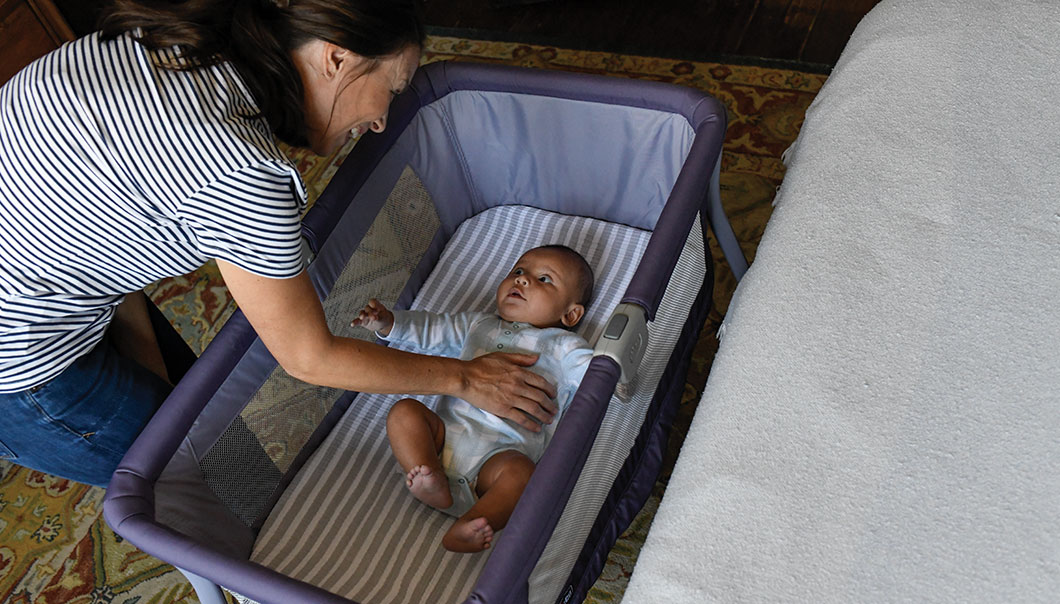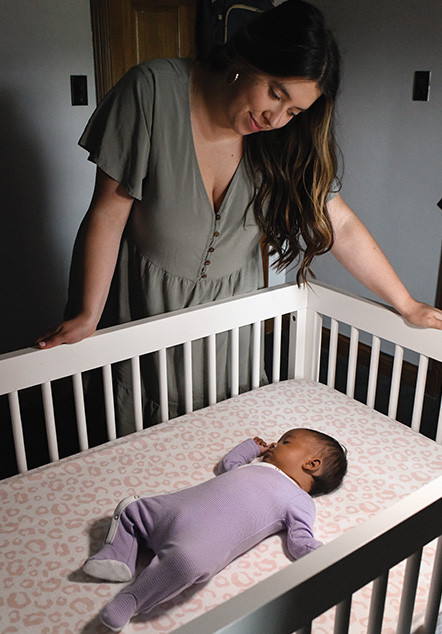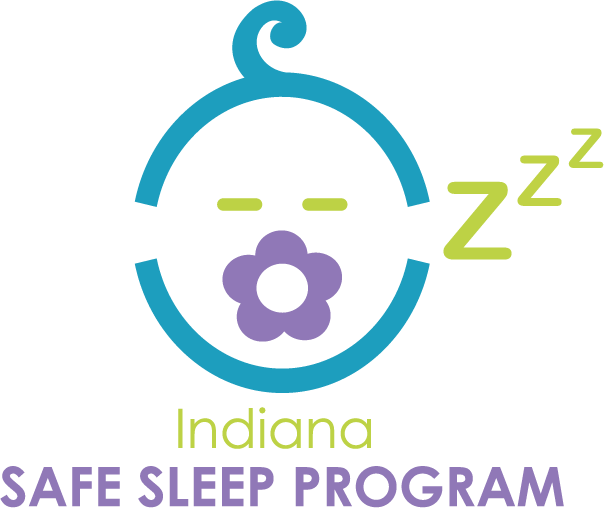Reduce el riesgo del síndrome de muerte súbita del lactante (SMSL) y otras causas de muerte infantil relacionadas con el sueño

Para reducir el riesgo del SMSL y de causas de muerte relacionadas con el sueño, sigue este ABC fundamental para el sueño seguro.
A
solas
Nunca acuestes a dormir al bebé sobre superficies blandas, como un sillón o sofá, almohadas, edredones, pieles de oveja o mantas.
B
Boca arriba
Los bebés duermen más seguros cuando se los coloca boca arriba sobre una superficie firme*. Cada momento de sueño cuenta. Coloca al bebé a dormir boca arriba durante la siesta y por la noche.
*Las superficies firmes para dormir son las cunas, los moisés y las áreas de juego portátiles con aprobación de seguridad.
C
En una Cuna
El lugar más seguro para que el bebé duerma es en una cuna. Usa una superficie firme para dormir, como un colchón en una cuna con aprobación de seguridad cubierto por una sábana ajustada.
No uses un asiento para el automóvil, un portabebés, un columpio ni productos similares como el área de descanso diario del bebé.
Tus acciones SÍ hacen la diferencia.
Hay muchas cosas que puedes hacer para mantener a tu bebé sano y a salvo.
- Visita a tu médico con regularidad durante el embarazo.
- No fumes, no bebas alcohol ni consumas drogas ilegales durante el embarazo o después del nacimiento del bebé. No fumes ni permitas que se fume cerca de tu bebé.
- Viste al bebé con ropa ligera para dormir. Mantén la habitación a una temperatura que sea cómoda para un adulto.
- Si traes al bebé a tu cama para alimentarlo, asegúrate de volver a colocarlo en un área separada para dormir cuando hayas terminado. Usa una cuna, un moisés o un área de juegos portátil con aprobación de seguridad en tu habitación junto a donde tú duermes.


Esta institución es un proveedor que ofrece igualdad de oportunidades.